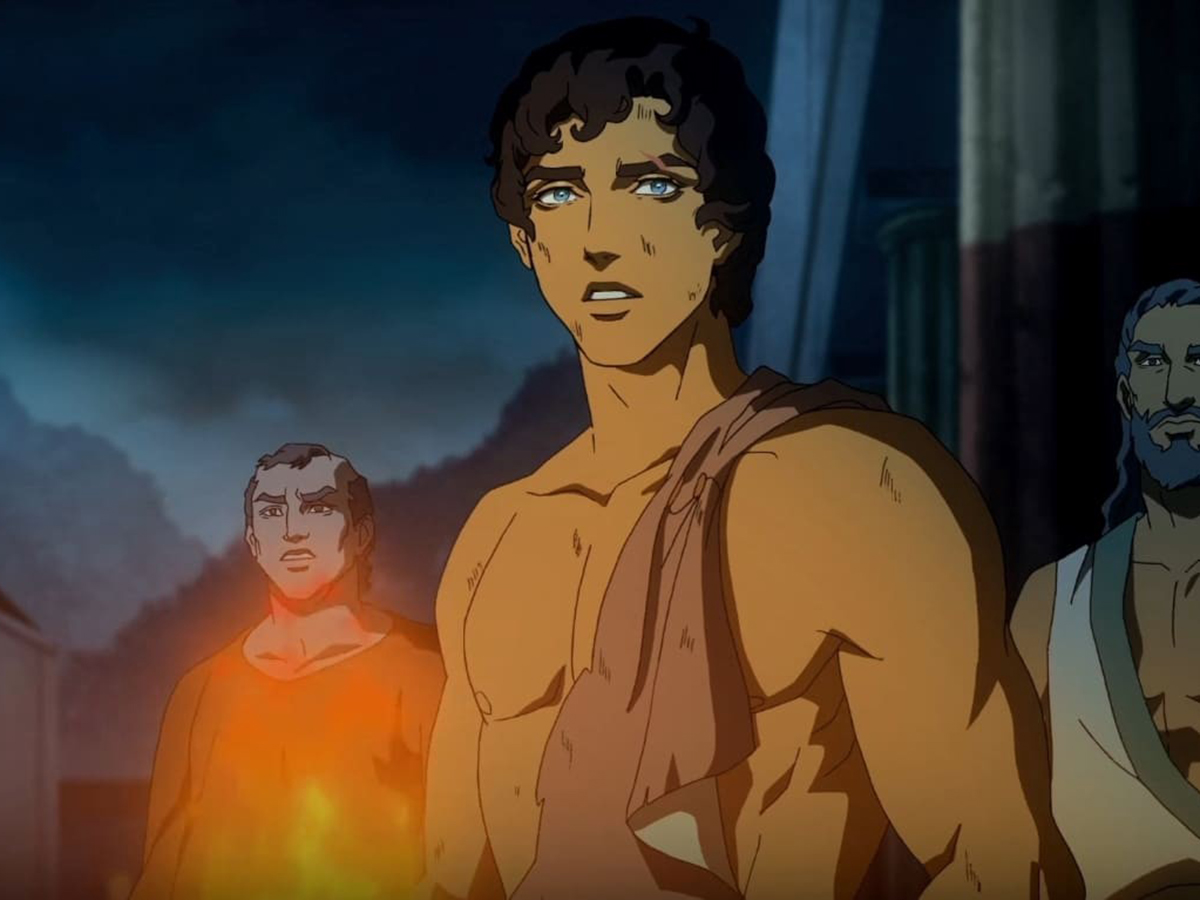
“Blood of Zeus” is a Netflix anime that follows Zeus’ son and demigod Heron (Derek Phillips), who is destined to stop demons and giants from taking over. Aside from focusing on, of course, Heron, the story follows the perspectives of the Olympians, mostly Zeus (Jason O’Mara), Hera (Claudia Christian) and the antagonist Seraphim (Elias Toufexis). The secondary cast includes Alexia the Amazonian (Jessica Henwick) and two smugglers, Evios (Chris Diamantopoulos) and Kofi (Adetokumboh M’Cormack), on the path to redemption.
The creators, Vlas and Charley Parlapanides, have a personal background to the lore that “Blood of Zeus” is based in. As second-generation Greek-Americans, they grew up hearing stories of Greek mythology from their grandmother. They also saw an American perception of their culture’s stories in comics like Marvel and DC. When asked about what motivated them to create the show in an interview with Inverse, they assured the audience that this show wasn’t some way to say that American interpretation of their mythology was wrong. “It’s not that they (Parlapanides) take umbrage with ‘Clash of the Titans’ and ‘Wonder Woman.’ The brothers are proud Greeks and geeks.” The Parlapanides just wanted to make the story more authentic. The brothers have other works that deal with Greek mythology, like the 2011 film “Immortals,” except they were the script writers. This is their first original show as both writers and creators.
Though some characters, like Heron and the antagonist Seraphim, aren’t part of the original Greek lore, a lot of their habits and backstories are. Heron’s origin story is reminiscent of another famous son of Zeus: Hercules. Both Hercules and Heron’s mothers were tricked into sleeping with Zeus because he disguised himself as their husband.
Zeus and Hera, in their relationship and actions, are almost exactly like their mythological counterparts. He has just as many affairs as he does in the original mythology, some of which are even gods, like Apollo, Artemis and Hermes. Hera, of course, is as angered by his infidelity in the show as she is in the mythology and takes it out on the lovers and children that result from his affairs. The only notable difference between the Zeus in lore and the Zeus in “Blood of Zeus” is he shows more empathy and love to his children and lovers. In the lore, he usually plays a heavy role in his lover’s deaths because of the lengths he goes to to avoid Hera’s wrath regardless of their safety and wellbeing. Even background characters remain authentic to the original lore, from Apollo waking up with both his female and male lovers to Alexia’s Amazonian armor and weapons.
The show itself becomes even more indistinguishable from the rest by its fusion of Japanese and American animation style. Aside from that, it has an art style that is specific to Netflix’s original animations, like “Castlevania.” It’s Japanese influence comes in the form of exaggerated expressions and dramatic, chaotic zoom-ins during fights. It even shows in the character design, especially for the Fates. They are drawn similar to the characters of “Demon Slayer: Kimetsu no Yaiba.” The American influence comes in the still shot frames where just the background is shown and in the characters stiffness in other scenes aside from action.
There were a couple pitfalls though that loosened the strength of the show, like the portrayal of the Chthonic beings. Cerberus is portrayed to be on the side of the demons, and Hades is seeming to be set up as the future antagonist of the second season. That portrayal is typical of American interpretation, since in Greek mythology they are neither displayed as morally good or bad, just neutral. It also doesn’t really develop its secondary characters like Alexia, Evios or Kofi.
However, the plot itself is interesting. It keeps what people love about the mythology and adds a layer of complexity to it. The antagonist Seraphim, for example, has a backstory that complicates how the audience sees him. He turns into a more sympathetic character than he has been in the original lore, as he was neither a god nor really even human. He fell under the category of monster and in the Greek mythology they were born to destroy and that was it. The pacing of the plot is a little slow because it takes a while to explain the alterations to the Greek mythology, like Heron, the story of the Giants and the Melidoni demons, yet it picks up again once the foundation is established. That said, the series excels with its wonderful world-building filled with rich and complex characters that make it worth watching.
Verdict: The show is good for those who have some knowledge of Greek mythology. It has a complex antagonist, beautifully drawn scenes and interesting world-building. While it has pitfalls, it is planned to run for five seasons, so these pitfalls could be a result of it still getting its footing.







